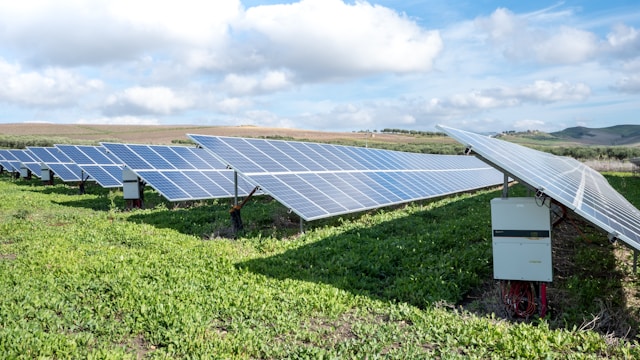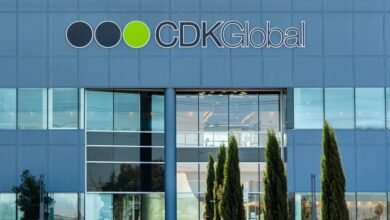From Blueprint to Biodegradable: PropTech's Influence on Eco-Friendly Construction

The construction industry is on the brink of a revolution, with property technology (PropTech) paving the way for more sustainable practices. From using biodegradable materials to implementing advanced energy systems, PropTech is not just changing how buildings are designed and constructed but also how they operate throughout their life cycles. For instance, imagine skyscrapers that reduce their carbon footprint through integrated solar panels and buildings where water recycling systems are a standard feature. This blog delves into how PropTech is instrumental in driving eco-friendly construction, ensuring that the future of building is both innovative and environmentally conscious.
What is PropTech?
Property Technology, commonly known as PropTech, is reshaping the construction landscape by integrating digital innovation into real estate development and management. This technology spans from software that improves building designs to automation tools that enhance construction processes. The pivotal role of PropTech becomes apparent in promoting sustainable development, especially through practices like bbf: – conscious development in construction. This approach emphasizes building with environmental and social awareness at the forefront, ensuring that each project contributes positively to its surroundings. PropTech enables builders and developers to meet higher standards of sustainability while also pushing the envelope on what modern construction can achieve.
Note: PropTech also facilitates real-time data analysis, allowing for immediate adjustments during construction to optimize environmental impact.
Sustainable Materials
In the realm of PropTech-driven construction, choosing the right materials is critical for environmental sustainability. The adoption of biodegradable and recyclable materials is on the rise, with PropTech enabling more precise use and reduced waste. Key materials include:
- Bamboo: Known for its rapid growth and strength.
- Recycled steel: Reduces the demand for new iron ore.
- Cork: A renewable resource providing excellent insulation.
- Reclaimed wood: Reduces deforestation and offers unique aesthetic appeal.
- Hempcrete: A lightweight, biodegradable building material.
For more insights on sustainable building materials, check out resources at the Environmental Protection Agency’s page on sustainable materials EPA Sustainable Materials. An expert in sustainable construction commented, “Using innovative materials not only reduces environmental impact but often improves building performance.” This integration of PropTech and sustainable materials marks a significant advancement in building practices, promising a greener future for the construction industry.
Energy Efficiency
PropTech is revolutionizing the way buildings consume energy, leading to highly efficient construction projects that not only save money but also protect the environment. By integrating smart technologies such as automated HVAC systems, LED lighting controlled by occupancy sensors, and thermally efficient building materials, PropTech ensures that new constructions are at the forefront of energy conservation. These technologies allow for real-time energy monitoring and management, significantly reducing unnecessary power consumption and enhancing the building’s overall energy performance.
An industry expert in green building technologies emphasizes, “Smart buildings designed with PropTech can reduce energy usage by up to 30%, setting a new standard in sustainable construction.“
Research Section: Recent studies highlight the impact of intelligent energy systems in buildings. A 2022 report from the Department of Energy found that buildings incorporating smart energy solutions saw an average decrease in energy consumption by 25% within the first year of implementation. This research underscores the crucial role of PropTech in advancing energy efficiency, illustrating its potential to transform the environmental footprint of the construction sector.
Smart Construction
The adoption of PropTech in construction not only supports sustainability but also enhances the efficiency and precision of building processes. Key innovations include:
- Automated Building Information Modeling (BIM): Tools that create more accurate building plans and automate adjustments during construction.
- 3D Printing: Used for constructing complex parts efficiently and with less waste.
- Drones and Robotics: For surveying sites and laying materials in hard-to-reach areas, ensuring precision and safety.
These technological advancements streamline construction workflows, reduce material waste, and shorten project timelines. For those looking to manage or relocate construction resources efficiently, services like Zipmover provide essential logistics support, making it easier to coordinate and optimize the movement of materials and equipment. This integration of technology transforms traditional construction into a modern, smart operation that emphasizes quality and sustainability.
Case Studies
Exploring real-world applications of PropTech in eco-friendly construction offers valuable insights into its transformative capabilities. Several pioneering projects around the globe have successfully integrated cutting-edge property technology to achieve remarkable sustainability goals. For instance, a development in Scandinavia used smart sensors and IoT to optimize energy use and drastically reduce carbon emissions, demonstrating the power of integrated systems. Another project in California implemented automated waste sorting and recycling processes directly on the construction site, significantly minimizing landfill waste.
For further exploration into innovative projects and trends within this field, visiting property technology can provide a broader understanding of how digital solutions are being tailored to meet ecological construction needs.
Stat Box:
- Projects using PropTech reported a 40% increase in energy efficiency.
- Reduction in construction waste by up to 30%.
These examples highlight the practical benefits of adopting PropTech in construction, showcasing its role in building a sustainable future and its growing impact on the industry.
Future Outlook
As we look to the future, the synergy between PropTech and sustainable construction is set to grow even stronger. Innovations in digital technology, materials science, and energy management are continually pushing the boundaries of what’s possible in eco-friendly buildings. This evolution not only enhances the efficiency and sustainability of new projects but also makes existing buildings more energy-efficient and environmentally friendly. The integration of smart technologies and sustainable practices will likely become standard, driving the industry towards greater environmental responsibility and innovation.





